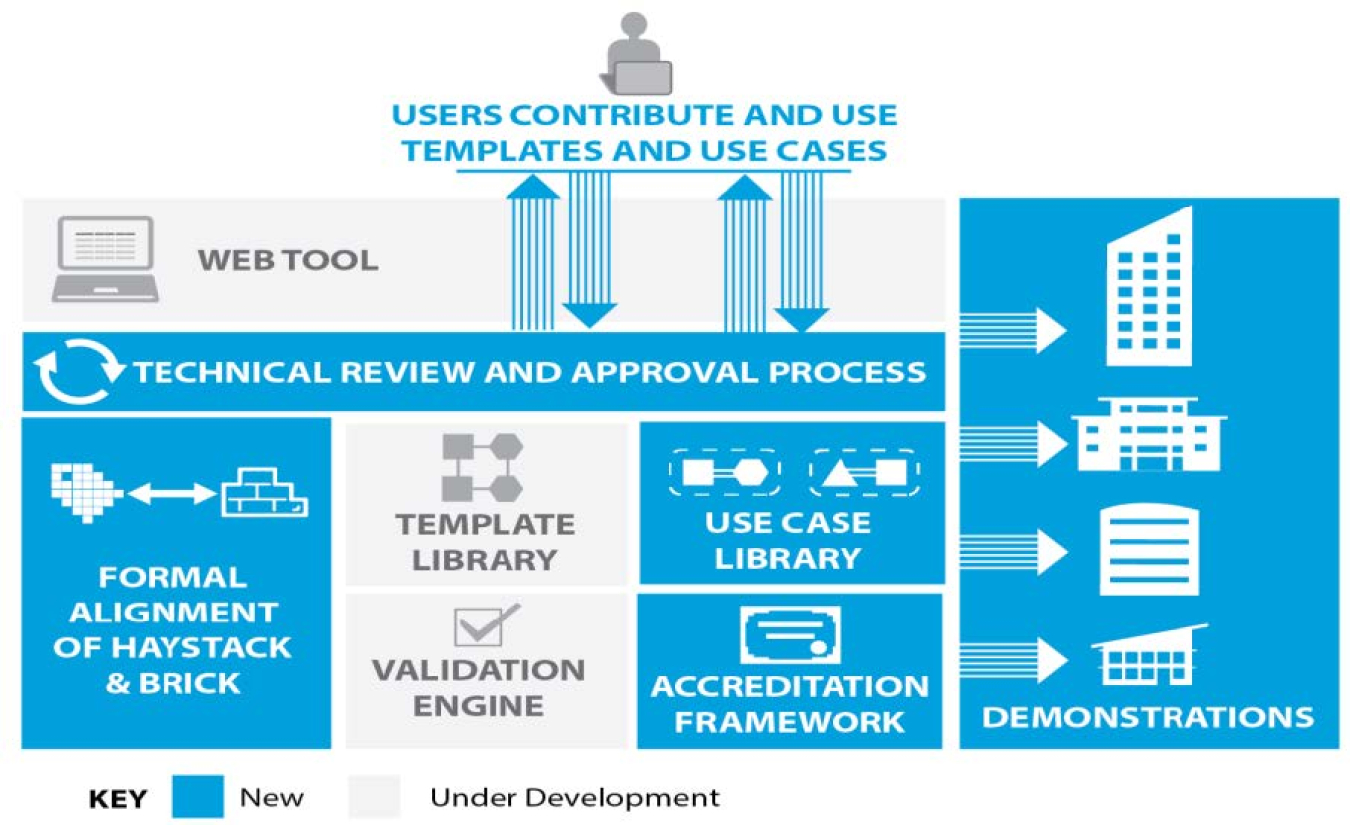
Project website: https://github.com/Project-Haystack/xeto
Performers:
-- Project Haystack - Glen Allan, VA
-- National Renewable Energy Laboratory - Golden, CO
Performance period: FY22-FY25
Funding opportunity: FY21 BENEFIT FOA
DOE funding: $2,500,000
Related projects: Semantic Modeling and Interoperability, Skewering the Silos
Project Objective
Haystack is a building and HVAC system metadata schema that is used in EMIS (energy management and information systems) platforms and analytics, fault-tolerance, and control applications. The presence of Haystack metadata makes EMIS and EMIS applications easier to install, program, and maintain. Haystack is open-source and managed by the industry consortium Project Haystack.
Haystack predates the building’s industry current interest in semantic modeling and therefore lacks some of its basic functionality. It allows building operators and system installers to represent building metadata explicitly and in a flexible way, but it does not enforce conformance to a standard schema. Similarly, it does not allow models to be programmatically queried in a comprehensive way to support automatic building software configuration.
Via this award, Project Haystack is augmenting Haystack and its surrounding tooling with capabilities that support model validation and query. A new facility called XETO (eXtensible Explicitly Typed Objects)—part type system, part template system, part query language, part API (application programming interface) is being developed that can deliver these capabilities to Haystack in a backward compatible way, allowing existing installations to migrate incrementally. As part of the project, Project Haystack is also developing a public repository for vendors to share XETO templates that capture the needs of their applications.
Adding these capabilities will also improve interoperability between Haystack and other emerging semantic modeling standards and schemas such as ASHRAE Standard 223P and Brick Schema, as the ability to enforce schematic conformance and sufficiency on Haystack models—a sufficient model is one that contains enough information to support a certain class of applications—makes translating models from one schema to another more robust.
Contacts
DOE technology manager: Amir Roth
Principal Investigator: Roger Quesnel, Project Haystack

